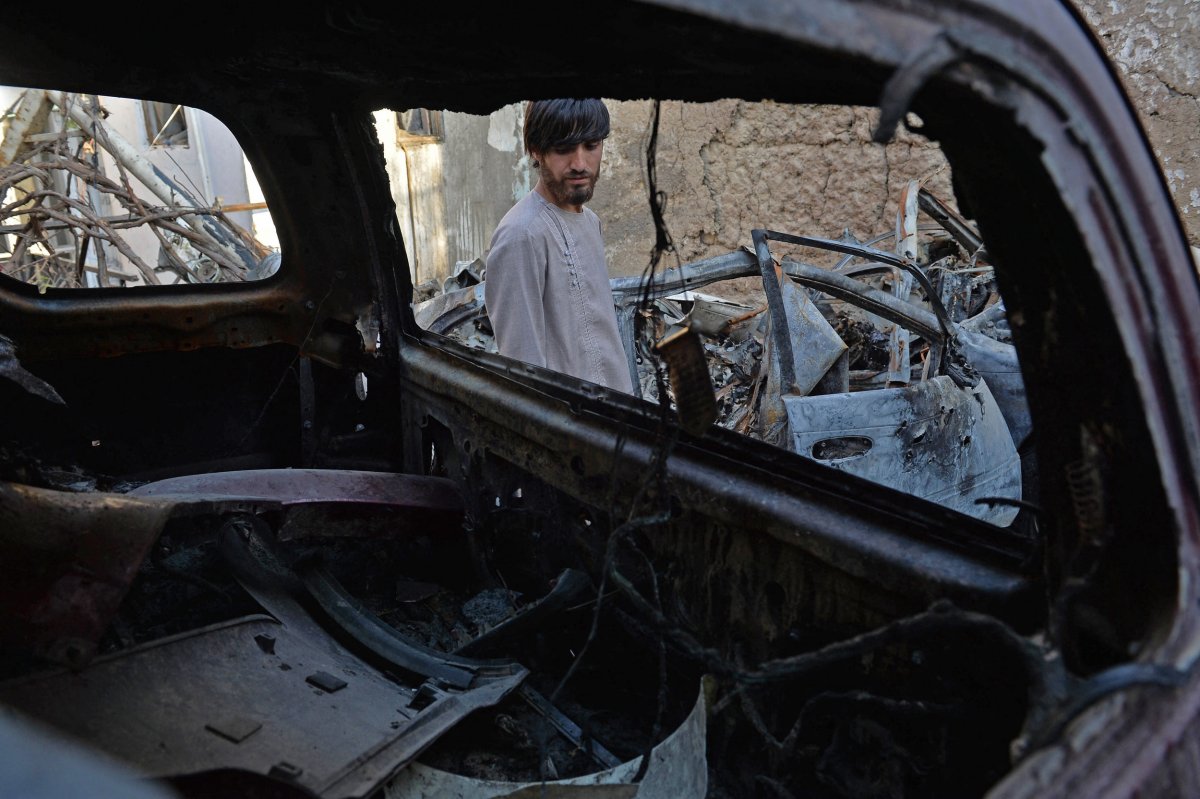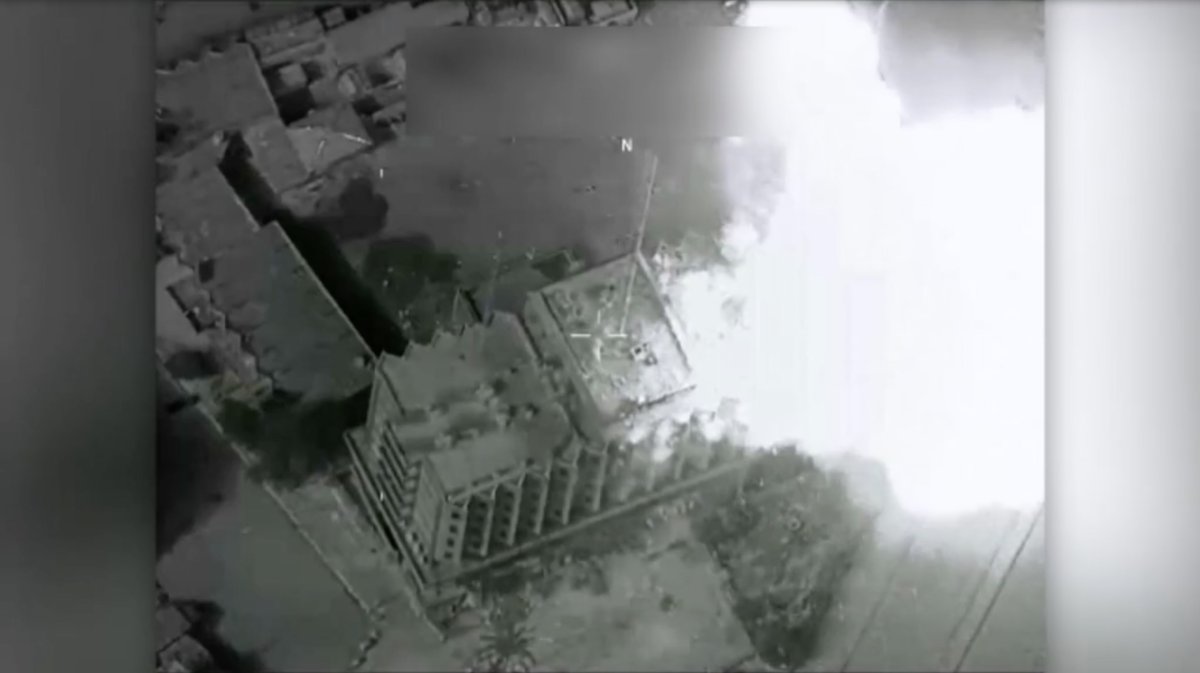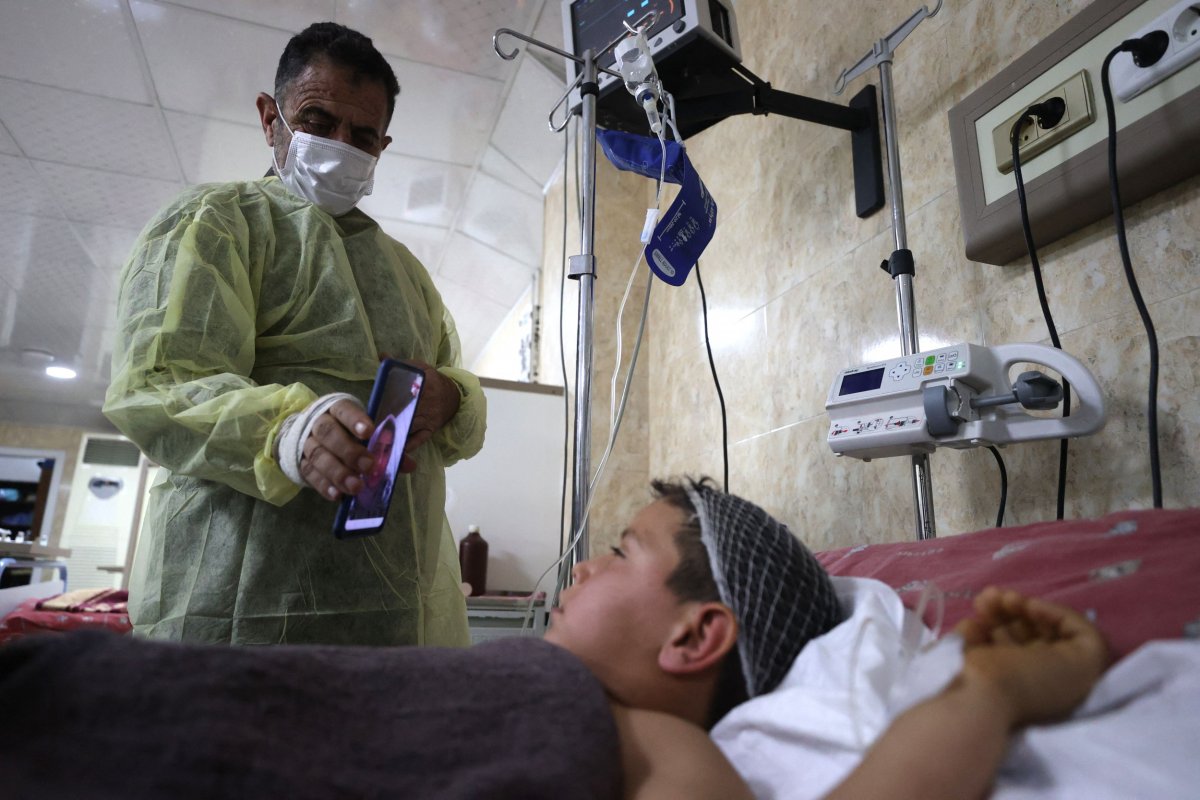President Joe Biden appears to have killed fewer civilians throughout his first year in office than any U.S. leader of the past two decades that mark the 21st century, according to estimates conducted by watchdogs and reviewed by Newsweek.
But civilian investigators also see a worrying trend emerging in which the Pentagon has been less forthcoming with data regarding suspected deaths of noncombatants.
These concerns have arisen amid recent high-profile incidents, such as the slaying of up to 10 members of the same family in a drone strike purportedly intended to take out an Islamic State militant group (ISIS) member in Afghanistan in August. That strike was conducted amid a chaotic U.S. military exit from a country where the U.S. has waged war over four administrations, each of which presided over very different phases of the multiple conflicts in which Washington has since engaged.
When Biden came to office last January, he inherited far less active combat than his predecessors. Reports compiled by the United Kingdom-based Airwars monitor found the U.S. killed between a minimum of 60 and a total alleged count of 82 civilians abroad between January 20 and December 31, 2020.
This figure is said to include between 10 and 26 civilians killed in 58 strikes in Iraq and Syria, a suspected 50 killed in 372 strikes in Afghanistan, and a potential six more slain in a yet unknown number of strikes in Yemen. A total of 10 strikes were also registered in Somalia, with no recorded civilian casualties.
The figures stem from civilian and local media reports, other monitors and official sources such as U.S. Central Command (CENTCOM), the U.S.-led coalition tasked with fighting ISIS, U.S. Africa Command (AFRICOM) and the United Nations Assistance Mission in Afghanistan (UNAMA), which notably did not include complete data points in its latest report, leaving the estimate highly provisional.
Reached for comment by Newsweek, UNAMA confirmed it did not have data regarding the full scope of civilian casualties caused by the U.S. in Afghanistan throughout the past year.

Even so, the provisional estimates of Biden's first year in office pales in comparison with his three predecessors, two of whom entered the White House in the midst of concurrent battles abroad, and one who first led the country into the "War on Terror" that is still ongoing, some two decades later.
The body count built up by President Donald Trump in his first year is by far the highest, but this is in large part because he assumed office at the height of the U.S. military campaign against ISIS, a conflict launched by his predecessor. By that point, the jihadis had entrenched themselves in major urban centers such as Mosul, Iraq and Raqqa, Syria, drawing intensive U.S. strikes that killed scores of civilians along with combatants.
The civilian casualty toll under Trump between January 20 and December 31, 2017 is estimated by Airwars to be between 4,952 and 20,930 in some 11,392 airstrikes.
These figures include between 4,721 and 20,749 killed in 9,944 strikes in Iraq and Syria alone, 154 killed in 1,248 airstrikes in Afghanistan, between 27 and 34 killed in 45 strikes in Somalia, between 48,147 killed in 130 strikes in Yemen and two killed in eight strikes in Pakistan, with an additional 17 strikes associated with no known civilian deaths in Libya.
And while Trump took on the most intense phases of the anti-ISIS conflict from the man who led the White House before him, President Barack Obama first came to office during a somewhat more tame yet still deadly period for civilians in war zones.
Between January 20 and December 31, 2009, the U.S. is believed to have killed between 492 and 604 civilians in 2,186 strikes. Incidents include between four and five killed in 80 strikes in Iraq, 388 killed in 2,050 strikes in Afghanistan, either none or one killed in a single strike in Somalia, and between 100 and 210 killed in 54 strikes in Pakistan.
No civilians were reported to have been killed in one single strike in Yemen and no data was available for this period for Libya, where the U.S. did not openly engage in hostilities until a March 2011 intervention launched by NATO against longtime leader Muammar el-Qaddafi. The civilian casualties under Obama would rise considerably as he continued to expand the U.S. drone program and later initiated the anti-ISIS campaigns.
Civilian casualty figures for the early days of President George W. Bush's administration are more difficult to come by due to a range of factors at the time the "War on Terror" was launched in the wake of the September 11, 2001 attacks.
One study compiled by the Project on Defense Alternatives in January 2002 estimated that U.S. bombs dropped in Afghanistan between the launch of the intervention in October 2001 and the beginning of the new year on January 1, 2002 led to the deaths of between 1,000 and 1,300 civilians. Another report compiled two months later by University of New Hampshire Professor Marc Herold placed the figure between 2,700 and 3,000 civilians killed from the October 7, 2001 start date of the intervention to December 10 of that year.
A decade later, The Nation compiled a database that estimated the minimum number of civilian casualties due to U.S. military action in Afghanistan between October and December 2001 at 1,182 and a maximum at 3,127. As the years went on, civilians would continue to die due to U.S. attacks by air and land, but nowhere would U.S. civilian casualties be as prevalent under Bush as in Iraq following a thunderous 2003 U.S.-led invasion.
Importantly, none of the data included in this article has taken into account the far larger number of civilians killed indirectly as a result of U.S. policies, including from disease or economic deprivation due to conflict and sanctions. But even when it came to the direct deaths inflicted by U.S. actions, figures for the early days of the U.S. interventions of the 21st century are relatively obscure.
Neta C. Crawford, chair of Brown University's Political Science Department and a director of the Watson Institute for International and Public Affairs' Costs of Wars project, explained why.
"As far as I know, the U.S. did not systematically track civilians killed in the latter part of 2001 through 2002," Crawford told Newsweek. "And in any case, the U.S. counts will likely miss civilians who were harmed because the U.S. definition of noncombatants was narrow from the Bush administration through the Obama administration."
Crawford, who recently authored "Accountability for Killing," a book discussing the moral responsibility of U.S.-caused civilian deaths in the post-9/11 era, explained how both Bush and Obama "tended to count any military-aged male (as young as 12) as a combatant, and often tended to include anyone located near militants as a combatant," while "the Trump administration had an even looser definition of combatant."
"Further, internal U.S and media research shows that the U.S. Central Command has not tended to conduct thorough investigations of allegations of civilian casualties," she added. "We also lack transparency on most CIA strikes in areas 'outside active hostilities.' I think it is too early to say how well the Biden administration will do in terms of investigating and reporting incidents of civilian harm due to its military operations."

As the fallout of the deadly drone strike in Afghanistan began to subside despite lingering calls for accountability, The New York Times, which led the investigation that prompted a retelling of the Kabul raid, reported in November that a 2019 strike in Syria's easter Deir Ezzor province had killed dozens of civilians. The following month, another U.S. bomb injured a family of six in northwestern Idlib province.
And reports of incidents continued to add up in Syria in particular even in the days leading up to Biden's one-year mark in office. Airwars published a report Monday of up to two men being killed in an alleged operation carried out by the U.S.-led coalition and its Kurdish-led Syrian Democratic Forces ally in the Deir Ezzor town of Al-Hawaij.
With up to 106 open cases of potential civilian casualty incidents that the Pentagon is investigating, and no clear standard as to how the military rules a report "credible" or "non-credible," Emily Tripp, research manager at Airwars, said the Biden administration's legacy had yet to be determined.
She told Newsweek that Airwars does not "discriminate by the administration," rather "it's more about what is the infrastructure and what is the structure behind those kinds of civilian casualty assessments within CENTCOM, AFRICOM, whoever it is."
So far, however, she expresses some reason for concern in recent dealings with the Pentagon, saying "unfortunately, the cooperation from CENTCOM hasn't really been forthcoming."
"In the past year or so, whether that's because of Biden, or whatever it is, we just haven't had that level of communication and we haven't seen that level of interest," Tripp said. "And when you look at the number of civilian harm assessments they've done in the past year, also you can just see this massive drop off. There are still over 100 open cases, and we're not clear what's going to happen to those."
"We'll just see what happens in the next few months," she added.

Uncommon Knowledge
Newsweek is committed to challenging conventional wisdom and finding connections in the search for common ground.
Newsweek is committed to challenging conventional wisdom and finding connections in the search for common ground.
About the writer
Based in his hometown of Staten Island, New York City, Tom O'Connor is an award-winning Senior Writer of Foreign Policy ... Read more
To read how Newsweek uses AI as a newsroom tool, Click here.








